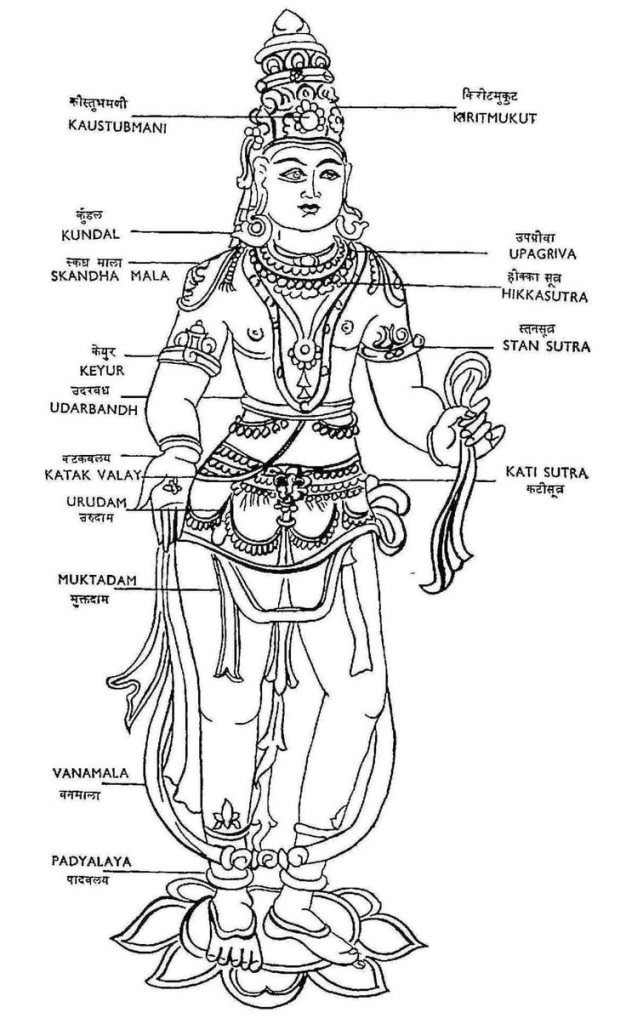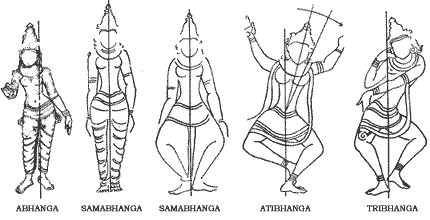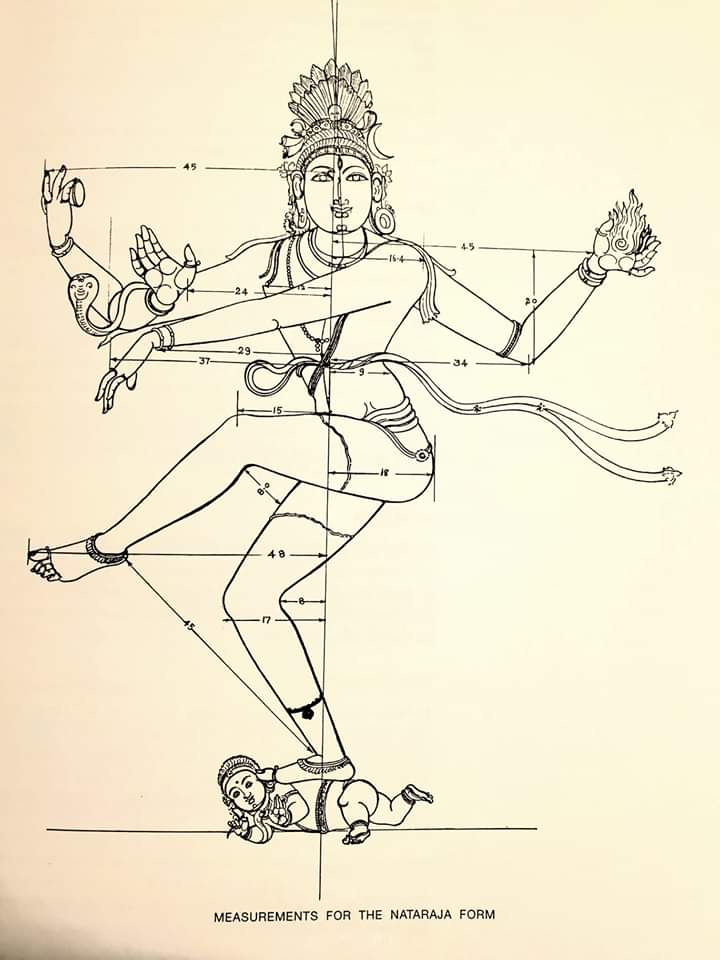ॐ श्री गुरुभ्यो नमः ॐ श्री शिवानन्दाय नमः ॐ श्री चिदानन्दाय नमःॐ श्री दुर्गायै नमः
Blogpost in Hindi & Other Global Languages
Source of all Images in this Blog-post : Google Images : ‘Google Image Search’ will reveal the multiple sources of every single image shared here. For more details, kindly see ‘Disclaimer‘
Buy Books on Shilpa Shastra / Sthapathya Shastra on Amazon India
Shilpa Shastras: The Ancient Manuscripts of Art and Craft
Shilpa Shastras, translating literally to ‘the Science of Shilpa’ (arts and crafts), represent a significant aspect of Hindu cultural heritage. These ancient texts, encompassing a broad spectrum of arts and crafts, are much more than mere instructional manuals. They serve as a repository of design rules, principles, and standards that have guided artisans through centuries.
In the domain of Hindu temple architecture and sculpture, the Shilpa Shastras take on an even more crucial role. They act as detailed guides for the creation of sculptures and the intricate iconography that adorns Hindu temples. The texts encompass a wide array of subjects, from the proportions and postures of deities to the symbolic significance of their attributes.
The Shilpa Shastras not only instruct on the technicalities of craftsmanship but also imbue spiritual and philosophical dimensions to the art, making them a unique blend of practicality and transcendence. Their influence is profoundly etched in the rich tapestry of Hindu temples and sculptures, which continue to awe and inspire to this day.

South Indian Or Dravidian Style Of Architecture
Buy Books on Shilpa Shastra / Sthapathya Shastra on Amazon India
Among other things the Shilpa Shastras prescribe the proportions of a sculptured figure, composition, principles, meaning, as well as all the rules of architecture.
The traditional classification lists sixty-four external skills or crafts, commonly referred to as Bahya-kala. These include a variety of disciplines such as carpentry, architecture, jewelry making, farriery, performing arts like acting and dancing, music, medical sciences, and poetry, among others. Additionally, there are sixty-four internal or ‘secret arts’, primarily focusing on the erotic arts, known as Abhyantara-kala.
Shilpa Shastras, while related to Vastu Shastras, specifically address the realm of arts and crafts. This includes the creation of statues, icons, stone murals, and engaging in activities like painting, carpentry, pottery, jewelry crafting, dyeing, textiles, and more.
Vastu Shastras are centered on the principles of architectural design, encompassing the construction of houses, forts, temples, and the planning of villages and towns.
Regarding Shilpa Shastras:
In ancient Indian literature, ‘Shilpa’ signifies any form of art or craft, whereas ‘Shastra’ represents science. Thus, Shilpa Shastra collectively refers to the scientific study of arts and crafts.

In ancient Sanskrit literature, the term ‘Shilpin’ refers to a male artist or craftsman, while ‘Shilpini’ is used to denote a female artist or craftsperson.

Buy Books on Shilpa Shastra / Sthapathya Shastra on Amazon India
Shilpa: The Multifaceted Spectrum of Art and Craftsmanship
Shilpa, a term steeped in complexity, embraces a vast spectrum of artistic and cultural crafts in its definition. It is not merely confined to one form of artistry but spans an extensive array of disciplines. This includes sculptors who carve expressions from stone, potters who shape the very earth into utilitarian beauty, perfumers who capture the essence of nature in fragrant concoctions, and painters who bring canvases to life with vibrant hues.
Shilpa also encompasses weavers, whose looms intertwine threads into intricate patterns, architects who design structures that stand as testaments to human ingenuity, dancers whose movements narrate stories without words, and musicians who create symphonies that resonate with the soul.
Additionally, it covers the nuanced arts of love, a testament to its all-encompassing nature. Each discipline, whether it be a sculptor, a potter, or a musician, contributes uniquely to the rich tapestry of art and culture, illustrating the profound and diverse meaning of Shilpa.

Read Ancient Indic Art I : Shilpa Shastra
Infinite Arts and Diverse Knowledge: Exploring the Depths of Ancient Indian Texts
Ancient Indian scriptures proclaim the boundless nature of artistic and intellectual pursuits. They identify sixty-four Kalas, or arts, each representing a unique form of creative expression ranging from traditional crafts to performing arts. These Kalas encompass a wide variety of skills and techniques, reflecting the richness and diversity of cultural practices.
Alongside these arts, the texts also enumerate thirty-two Vidyas, which are distinct fields of knowledge. These Vidyas cover a broad spectrum of disciplines, from philosophical and spiritual teachings to practical sciences, illustrating a deep reverence for both artistic and scholarly endeavors. This extensive classification underscores the ancient Indian commitment to embracing and cultivating a vast array of talents and wisdom.

Shilpa, a significant concept in Indian art, is extensively discussed in various ancient texts like the Agamas, Puranas, and Vastu Shastra. These texts link Shilpa to the mythological figure of Vishvakarma revered as the divine engineer and architect in Hindu tradition.
Regarding Paintings:
The Shilpa Shastras encompass detailed sections on the art of painting, ranging from intricate miniatures to large-scale works. For instance, the Narada Shilpa Shastra allocates chapters 66 and 71 specifically to painting techniques and theories.
Similarly, the Saraswati Shilpa Shastra provides an in-depth analysis of different painting styles. It delves into Chitra, which denotes a fully realized painting; Ardhachitra, focusing on sketch work; Chitrabhasa, exploring the nuances of communicating through painting; and Varna Samskara, detailing the preparation and application of colors. These texts reflect the profound understanding and appreciation of painting in ancient Indian art and culture.
Other notable ancient texts on painting within the Shilpa Shastra tradition include the Vishnudharmottara Purana and Chitralakshana. The former exists in its original Sanskrit form, while Chitralakshana is primarily preserved in Tibetan translations, with its original versions believed to have been written on birch bark. Both of these texts have been translated into English and German, making their rich content accessible to a wider audience.
These treatises delve into various critical aspects of painting such as measurement, proportions, perspective from the viewer’s standpoint, Mudra (symbolic hand gestures), emotions, and Rasa (the essence or flavor of a work, particularly in the performing arts). This comprehensive approach positions the Shilpa Shastras not just as authoritative texts on artistic canons, but also as vehicles for conveying knowledge and spiritual themes through Indian paintings.
In the Realm of Carpentry:
Focusing on carpentry, the first chapter of the Shilpa Shastra Manasara lays out fundamental principles of measurement specific to woodworking. This highlights the meticulous attention to detail and precision inherent in traditional Indian carpentry, as guided by the Shilpa Shastra’s teachings.

The Mayamata text from Tamil Nadu, dating back to the 9th century, and the 16th-century Shilparatna from Odisha, detail the roles of Takshaka and Vardhaki as wood Shilpins in ancient Indian craftsmanship. Takshaka is described as an expert in identifying different types of wood and skilled in the art of wood cutting. In contrast, Vardhaki is known for his deep understanding of wood forms and his expertise in carpentry.
An early reference to the art of carpentry can be found in the Rig Veda, specifically in Book 9, Chapter 112, indicating the longstanding significance of this craft in Indian culture. Additionally, carpentry played a crucial role in the Shilpa Shastra, particularly in the construction of Hindu temples, where the intricate and precise work of carpenters was essential in bringing the architectural visions to life.
Metal Craft in Ancient Indian Shilpa Shastra
The Vedas, particularly the Atharva Veda and Sthapatya Veda, are rich in references to various arts and crafts, as seen in their discussions on Shilpa Shastra and Yantra Sarvasva. Within these texts, there’s a particular focus on metalwork, highlighting the ancient Indian expertise in this field.
The Rig Veda, for example, mentions specific equipment used in metal casting, such as the dhamatri (cupola), gharma aranmaya (crucible), and bhastri (blower). These references are often made in the context of idol making, detailing guidelines for achieving ideal Talmana (proportions), Mudra (stances), and Bhava (expressions) in the crafted figures.
Sanskrit texts like the Shilparatna and Manasara delve deeply into the process and principles of metalwork. They offer extensive insights into working with alloys, especially Panchadhatu (a blend of five metals: zinc, tin, copper, silver, and gold) and Ashtadhatu (an eight-metal alloy that includes iron, lead, and mercury in addition to the metals in Panchadhatu).
A particularly well-documented technique in these ancient texts is the Madhuchista Vidhana, also known as the cire perdue or lost wax process. This method was highly regarded and extensively discussed in the context of metal crafting.
The influence of these Shastras extended beyond India, influencing metalworking practices in other ancient Asian cultures. Despite some ancient Shilpa Shastras being lost over time, there remains empirical evidence of advanced metallurgy and metal art in ancient India. A prime example is the 5th-century Iron Pillar of Delhi. Standing 23 feet tall, weighing 6 tonnes, and composed of 99.72% iron, this pillar is a testament to the sophisticated state of metallurgical arts in 5th-century India, particularly notable for its resistance to rusting.
Education in Shilpa Shastra in Ancient India
In ancient India, the study and practice of Shilpa Shastra were remarkably inclusive, transcending the barriers of birth, class, caste, and gender. All forms of art were accessible to everyone, regardless of their social standing.
The ancient texts of Parashara affirm that crafts were open to all, regardless of a family’s traditional occupation. This inclusive approach to arts and crafts is further evidenced in various historical texts. For instance, the Buddhist Jatakas narrate tales of Brahmin carpenters, while the 4th-century text Baudhayana speaks of chariot builders, carpenters, brick workers, potters, and metalworkers coming from Kshatriya, Vaishya, and Shudra backgrounds.
The Suttavibhanga, another significant text, describes individuals born to a Shudra father and a Brahmin mother, who later generations would consider untouchables, engaging in professions like building and wheelwrighting. This further illustrates the non-discriminatory nature of vocational choices in ancient India.
In the region of Maharashtra, the profession of goldsmithing saw the inclusion of children from cattle-herding families, breaking the conventional norms of hereditary occupations. Similarly, in the Assam Valley, traditional crafts such as bamboo and cane work were not confined to any specific caste or community. These crafts were predominantly undertaken by peasants, cutting across the divides of caste, community, or creed, thereby showcasing a society where art and craft were truly universal and egalitarian in nature.
Training in Arts and Crafts through Apprenticeship
In ancient India, apprenticeship was a pivotal part of learning arts and crafts. Young apprentices were taken under the wing of master artisans, receiving hands-on training and guidance in their chosen craft. Those who excelled in their skills and dedication were eventually acknowledged and welcomed as members of the various art guilds.
This apprenticeship typically commenced in childhood, encompassing a holistic education. Alongside practical training in their specific art or craft, apprentices were also taught about Dharma (duty, morality, and ethical living) and cultural traditions. Their curriculum included essential academic subjects such as reading, writing, mathematics, and geometry. Additionally, they were educated in the nuances of color theory, the use of tools, and other specialized knowledge pertinent to their craft, including trade secrets. This comprehensive approach to apprenticeship ensured that the trainees not only mastered their art but also gained a well-rounded understanding of the broader cultural and ethical context in which their craft was practiced.
Guilds in Ancient Indian Shilpa
In ancient India, practitioners of Shilpa, known as Shilpins, organized themselves into Sreṇis, or guilds. Each of these guilds crafted its own set of laws and codes of conduct, which were traditionally respected and upheld by the Hindu and Buddhist monarchs of the time.
The relationship between the guilds and the ruling authority varied. In some instances, the king himself established the laws governing these guilds, while in other cases, the king’s treasurer played a crucial role, acting as the final arbiter and judge for the various guilds within the kingdom.
Remarkably, these guilds, which date back to the 1st millennium BC, were inclusive and embraced members engaged in the art, regardless of their caste or creed. This inclusivity was a hallmark of the guild system in ancient Indian society.
The financial sustenance of these guilds was multifaceted. They derived income from membership fees paid by new entrants, fines imposed on members who violated the guild’s code of conduct, and levies on the tools used for practicing their respective arts.
Moreover, these guilds were not just economic entities; they played a significant role in the social fabric of the time. They engaged in charitable activities and often donated collective artworks created by their members to temples and other social causes.
During festivals and social events, each guild showcased its unique identity and contributions. They participated actively, presenting their own performances and setting up pavilions adorned with flags and emblems representative of their guild. This vivid display of artistry and community spirit was a testament to the vital role guilds played in the cultural and social dynamics of ancient India.
Art as a Spiritual Endeavor in Ancient India:
In ancient Indian culture, the act of creating art was revered as a sacred practice, and artists were esteemed for their ability to imbue their works with spiritual significance. This reverence for the artistic process has endured over time, finding its expression in contemporary Indian rituals. A notable example is the autumn festival Dashahra, during which craftsmen in certain regions of India ceremonially honor their tools with offerings of incense, flowers, and unhusked rice.
The Brhat Samhita, specifically in verses 57.10-11, illuminates a profound respect for nature within the craft of carpentry. It describes how carpenters would traditionally offer prayers and ask for forgiveness from a tree before cutting it down for wood. To mitigate harm, the axe used in the cutting was anointed with honey and butter, acknowledging the tree as a living entity deserving of compassion.
In this cultural context, crafting was perceived as more than just a manual activity; it was seen as an application of Purusha, the universal principles, onto elements of nature. This process transformed raw natural materials into works of art, embodying a harmonious blend of spiritual essence and physical form. This approach underscores the deep spiritual connection between the artist, their craft, and the natural world in ancient Indian artistry.
Buy Books on Shilpa Shastra / Sthapathya Shastra on Amazon India
Treatises on Shilpa Shastras – See Wikipedia Page of Shilpa Shastras
Temple Architecture – Devalaya Vastu




5 replies on “Discovering the Beauty and Wisdom of Shilpa Shastras: The Science behind Ancient India’s Arts, Crafts and Architecture”
I want this book sir
I would like to buy this book
Yes sir please tech about shilpa shastra
A very comprehensive background of SHILPA SHASTRAS- very interesting and detailed.
Really informative content on the ancient Hindu culture. Opens up a beginner’s perspective on the topic. Thanks!